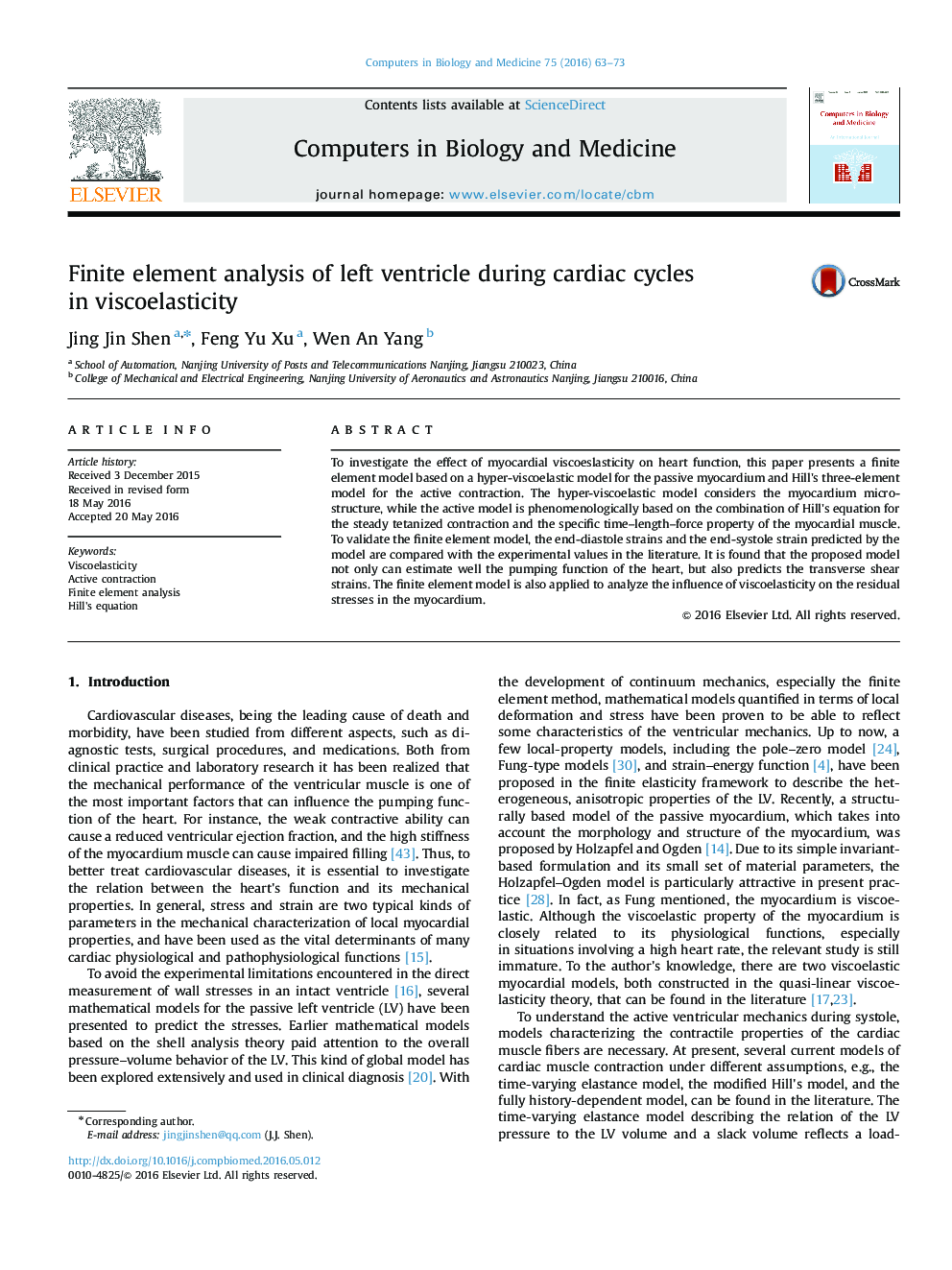| Article ID | Journal | Published Year | Pages | File Type |
|---|---|---|---|---|
| 504801 | Computers in Biology and Medicine | 2016 | 11 Pages |
•A finite element viscoelastic model for left ventricle is proposed.•Residual stresses due to viscoelasticity are small around the basal and equatorial areas.•The strains predicted by the model are agreeable with the experimental data.
To investigate the effect of myocardial viscoeslasticity on heart function, this paper presents a finite element model based on a hyper-viscoelastic model for the passive myocardium and Hill's three-element model for the active contraction. The hyper-viscoelastic model considers the myocardium microstructure, while the active model is phenomenologically based on the combination of Hill's equation for the steady tetanized contraction and the specific time–length–force property of the myocardial muscle. To validate the finite element model, the end-diastole strains and the end-systole strain predicted by the model are compared with the experimental values in the literature. It is found that the proposed model not only can estimate well the pumping function of the heart, but also predicts the transverse shear strains. The finite element model is also applied to analyze the influence of viscoelasticity on the residual stresses in the myocardium.
